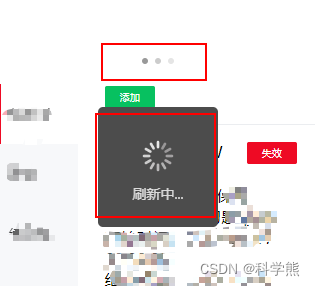目录
- 一、什么是 Aware 结尾的类?
- 二、常见的 Aware 实现接口
- 三、Aware 实现原理
一、什么是 Aware 结尾的类?
在 Spring Boot 中,以 Aware 结尾的类通常是一些继承了 Aware 接口的接口类,它们用于使 Bean 获取某些特定的能力或资源。这些接口提供了回调方法,当 Bean 被 Spring 容器初始化时,Spring 会在适当的时机调用这些方法,从而将相应的能力或资源注入到 Bean 中。
Spring 中 Aware 接口的源码如下:
package org.springframework.beans.factory;/*** A marker superinterface indicating that a bean is eligible to be notified by the* Spring container of a particular framework object through a callback-style method.* The actual method signature is determined by individual subinterfaces but should* typically consist of just one void-returning method that accepts a single argument.* ------------------------------* 一个标记的超接口,指示 bean 有资格通过回调样式的方式由特定框架对象的 Spring 容器通知。实际* 的方法签名由各个子接口决定,但通常应该只包含一个接受单个参数的空返回方法。** <p>Note that merely implementing {@link Aware} provides no default functionality.* Rather, processing must be done explicitly, for example in a* {@link org.springframework.beans.factory.config.BeanPostProcessor}.* Refer to {@link org.springframework.context.support.ApplicationContextAwareProcessor}* for an example of processing specific {@code *Aware} interface callbacks.* ------------------------------* 注意,仅仅实现 Aware 不提供默认功能。相反,处理必须显式地完成,例如在 org.springframework.beans.factory.config.BeanPostProcessor 中。* 请参阅 org.springframework.context.support.ApplicationContextAwareProcessor,以获取处理特定 *Aware 接口回调地示例。** @author Chris Beams* @author Juergen Hoeller* @since 3.1*/
public interface Aware {}
二、常见的 Aware 实现接口
以下是几个常见的 Aware 的实现接口及其作用:
ApplicationContextAware:允许 Bean 获取对 ApplicationContext 的引用,以便能够访问 Spring 容器的功能、配置和其他 Bean。BeanFactoryAware:允许 Bean 获取对 BeanFactory 的引用,以便能够访问 Spring 容器的工厂方法。EnvironmentAware:允许 Bean 获取对 Environment 的引用,以便能够访问 Spring 应用程序的配置环境。ResourceLoaderAware:允许 Bean 获取对 ResourceLoader 的引用,以便能够加载外部资源,如文件、URL等。ServletContextAware:允许 Bean 获取对 ServletContext 的引用,以便能够与 Servlet API 进行交互。
通过实现这些 Aware 接口,并对相应的回调方法进行处理,可以在 Spring Boot 应用程序中方便地获取和使用相应的能力或资源。
三、Aware 实现原理
在 Spring Boot 中,ApplicationContextAware 为例,是通过 ApplicationContextAwareProcessor 来初始化的。
ApplicationContextAwareProcessor 是一个 BeanPostProcessor(后置处理器),它会在 Spring 容器初始化 Bean 时扫描类路径,检查哪些 Bean 实现了 ApplicationContextAware 接口,并在实例化 Bean 后,通过回调方式将 ApplicationContext 注入到 Bean 中。
之前的文章有介绍过,Spring 中 Bean 的生命周期如下:
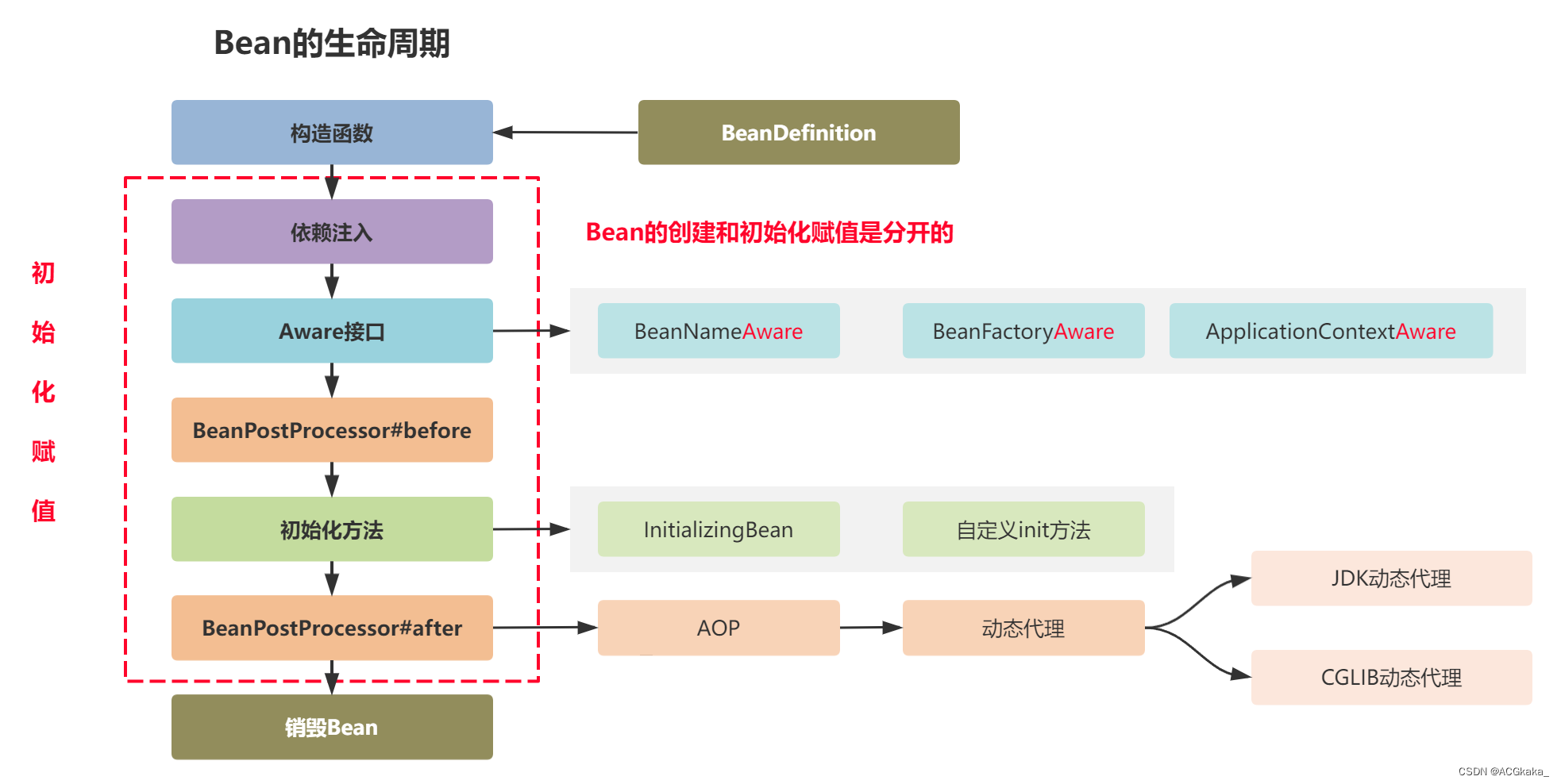
我们在图中可以看到,当 Bean 在执行完依赖注入之后就开始调用 Aware 接口的相关实现类了。其实具体来说这一步应该归属于 BeanPostProcessor#before 这一过程。
BeanPostProcessor 是用于增强 Bean 功能的后置处理器,其中封装了 before 和 after 两个方法,分别在 Bean 的初始化前后执行,源码如下:
package org.springframework.beans.factory.config;import org.springframework.beans.BeansException;
import org.springframework.lang.Nullable;public interface BeanPostProcessor {@Nullabledefault Object postProcessBeforeInitialization(Object bean, String beanName) throws BeansException {return bean;}@Nullabledefault Object postProcessAfterInitialization(Object bean, String beanName) throws BeansException {return bean;}
}
以 ApplicationContextAware 为例,它是通过 ApplicationContextAwareProcessor 类进行调用的,ApplicationContextAwareProcessor 类实现了 BeanPostProcessor 接口的 before 方法:
class ApplicationContextAwareProcessor implements BeanPostProcessor {@Override@Nullablepublic Object postProcessBeforeInitialization(Object bean, String beanName) throws BeansException {if (!(bean instanceof EnvironmentAware || bean instanceof EmbeddedValueResolverAware ||bean instanceof ResourceLoaderAware || bean instanceof ApplicationEventPublisherAware ||bean instanceof MessageSourceAware || bean instanceof ApplicationContextAware)){return bean;}AccessControlContext acc = null;if (System.getSecurityManager() != null) {acc = this.applicationContext.getBeanFactory().getAccessControlContext();}if (acc != null) {AccessController.doPrivileged((PrivilegedAction<Object>) () -> {invokeAwareInterfaces(bean);return null;}, acc);}else {invokeAwareInterfaces(bean);}return bean;}private void invokeAwareInterfaces(Object bean) {...if (bean instanceof ApplicationContextAware) {((ApplicationContextAware) bean).setApplicationContext(this.applicationContext);}}
}
所以,Aware 是通过 BeanPostProcessor 后置处理的 before 方法,在 Bean 进行初始化之前执行了相关操作,将某些特定的能力或资源赋予 Bean。
整理完毕,完结撒花~ 🌻

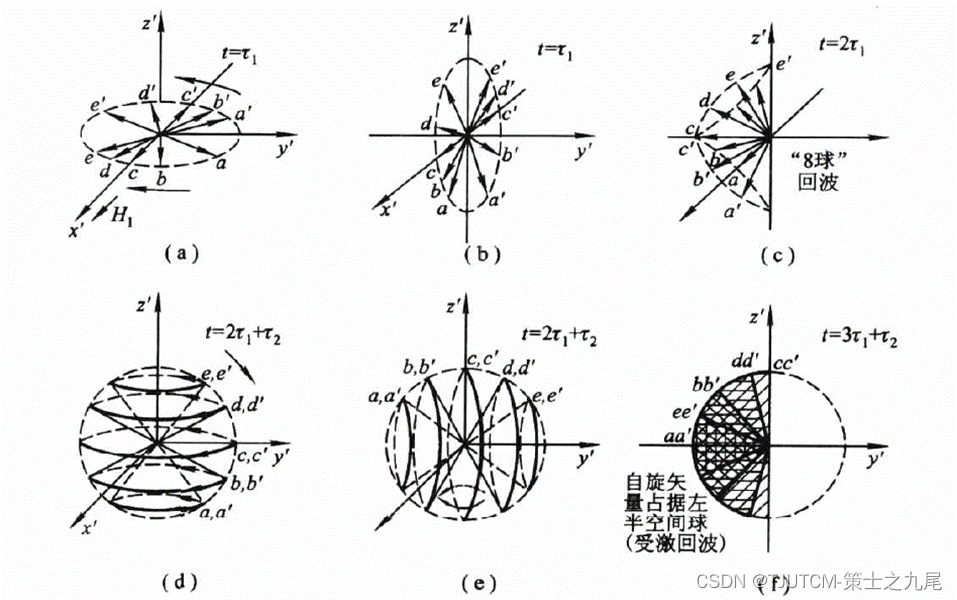

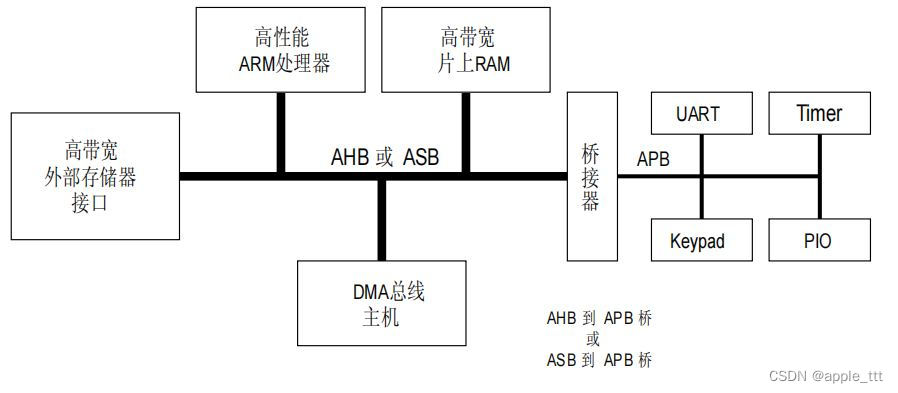



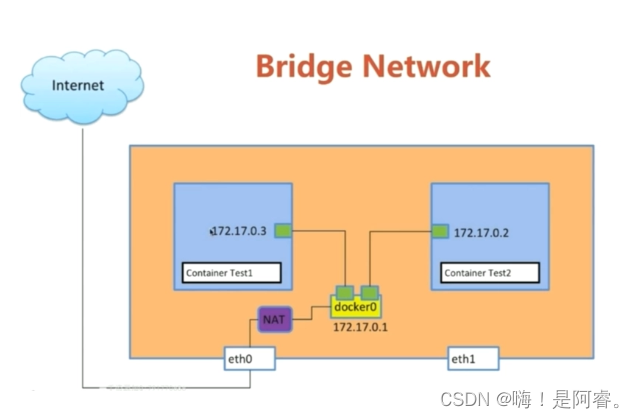
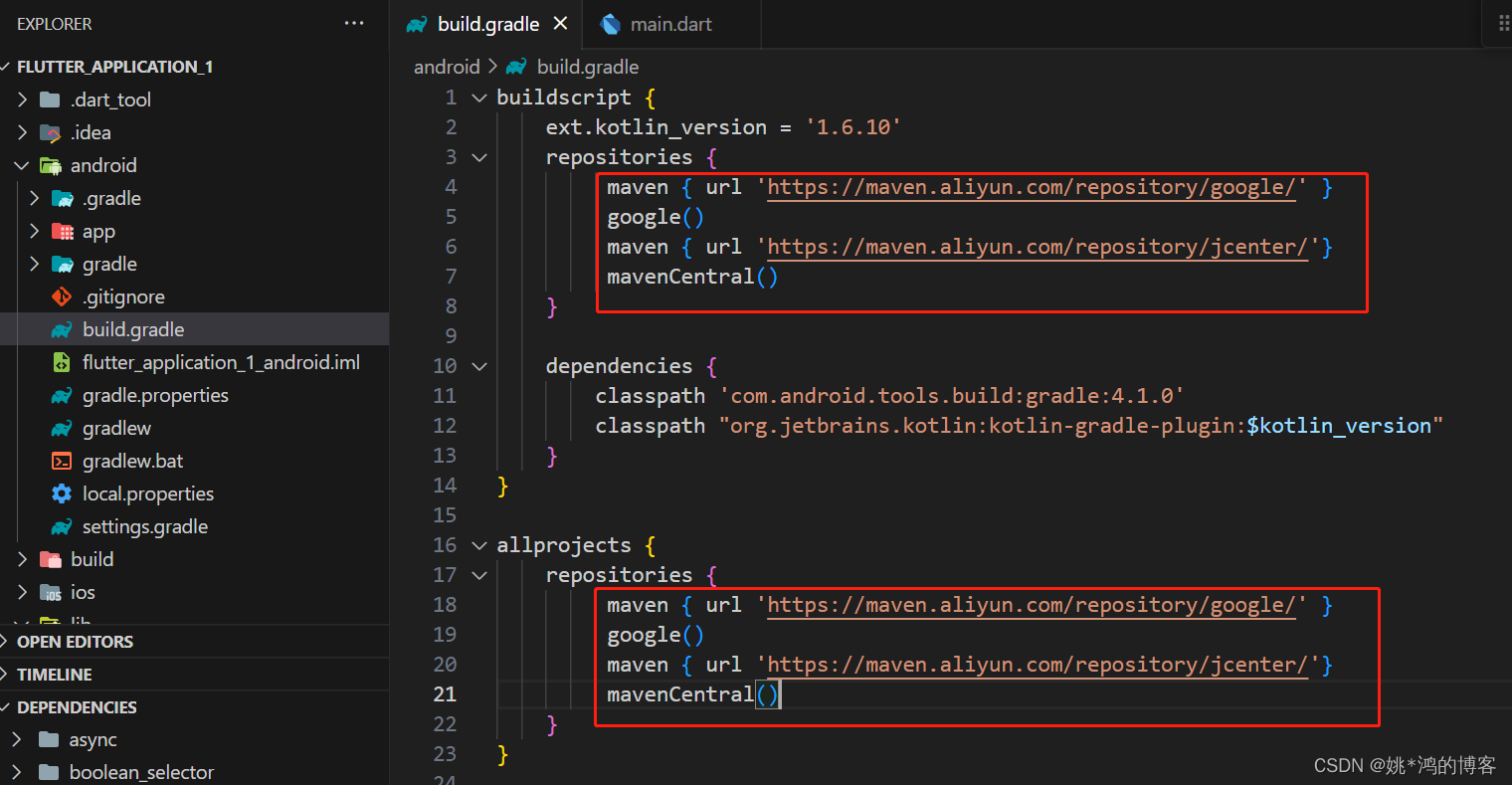
![[机器学习]特征工程:主成分分析](https://img-blog.csdnimg.cn/img_convert/29d4c948ca9d9f2770c6e926a210d0b2.png)

